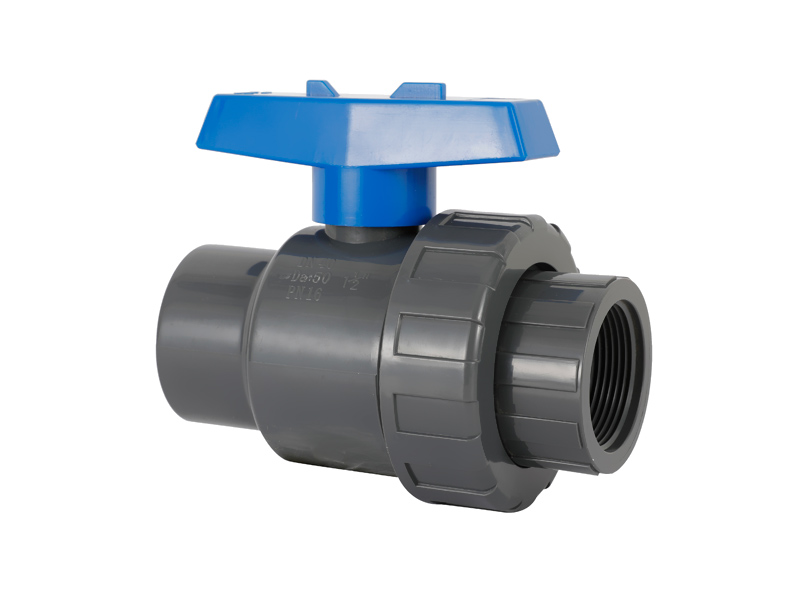How does the male ball valve design enable smooth and effortless on/off operation?
The male ball valve design is a key characteristic...
MORE >>















The Butterfly Valve is a type of valve that regulates a […]
The Butterfly Valve is a type of valve that regulates and isolates the flow of fluid. Its closing mechanism consists of a disk that rotates. It is designed to be safe from exposure to corrosive or caustic chemicals. Some of the features of this valve include: Compact design, Fast actuation, Non-reactive coating, and Lined design.The pivot stem of a butterfly valve can become corroded if exposed to caustic or corrosive materials. The pivot stem of a butterfly valve is usually made of brass, which is a corrosion-resistant alloy composed of copper and zinc. This material can also withstand high temperatures. Brass butterfly valves are commonly used in wastewater treatment and food processing facilities. However, they are not suitable for use in chlorinated water, as chlorine will dezincify brass.Lined butterfly valves are available in different material options.
Plastic UPVC SINGLE UNION BALL VALVE

1. Environment friendly, non-toxic, good looking;
2. Light weight, easy to handle and transport;
3. Soft colors and excellent design, suitable for installation either exposed or hidden;
4. Wonderful ability in chemical corrosion resistance;
5. Easy and fast installation, making cost minimized;
For example, a PTFE seat is available in a ceramic-like coating, which is resistant to both abrasion and corrosion. Similarly, a PTFE seat is available with a non-toxic internal seal to protect the valve from corrosive or caustic chemicals.Lined butterfly valves are available with a variety of threaded or nut-and-bolt connection systems, including flanged valves and ball valves. Both types feature a one-piece body, hard-backed seat and dry stem journal, which make them suitable for a wide range of applications. Lined butterfly valves are available in a range of sizes and pressures to meet the needs of various industries.Compact design is one of the main factors that determines the efficiency of a butterfly valve. It is important to ensure that the valve is not obstructed by solids, which could cause premature wear and tear of the rubber seat.
The valve is also susceptible to jamming due to material lodged on the inlet side of the valve.Butterfly valves come in a variety of sizes and materials. The most common are made from PTFE, which is also called polyethylene. Other materials that may be used include ethylene propylene diene monomer (EPDM) and polytetrafluoroethylene (PTFE). EPDM is a common choice for the butterfly valve's soft seat, as it resists polar and alkaline media. However, it doesn't perform well with petroleum-based oils. Similarly, polytetrafluoroethylene (PFE), which is also known as Teflon, offers excellent corrosion resistance. The elastomeric butterfly valve body can be made of cast iron, ductile iron, aluminum, carbon steel, or other exotic metals.Compact design of butterfly valves can be useful for applications where space is limited. This type of valve is compact, light, and easy to install. Its simple construction and convenient operation make it popular in many industries.A butterfly valve can be operated manually or with the help of an actuator. The most common type of butterfly valve actuator is an electric motor.
These actuators have low maintenance and are reliable. They use high-speed, reversible motors to control the valve's open and close functions. The motor's torque is controlled by the valve's position and is connected through a gear train. Limit switches may also be included to prevent the valve from being fully open or closed.The materials used to build butterfly valves are important to their performance. The seat material used in butterfly valves varies depending on the temperature, pressure, and media to be handled. PTFE and reinforced PTFE are the most common materials used for butterfly valve seats, but there are metal seats as well. Some elastomeric seats also have metal back-ups for fire protection. Other materials used for butterfly valve bodies include cast iron, ductile iron, aluminum, carbon steel, and exotic metals.

The male ball valve design is a key characteristic...
MORE >>
In today's modern world, efficient and reliable wa...
MORE >>
Copyright ©All rights reserved:Zhejiang Xier Plastic Valve Lead Co.,LTD. PVC Ball Valves Manufacturers Technical support: HWAQ  浙公网安备 33060402001174号
浙公网安备 33060402001174号

 English
English España
España عربي
عربي